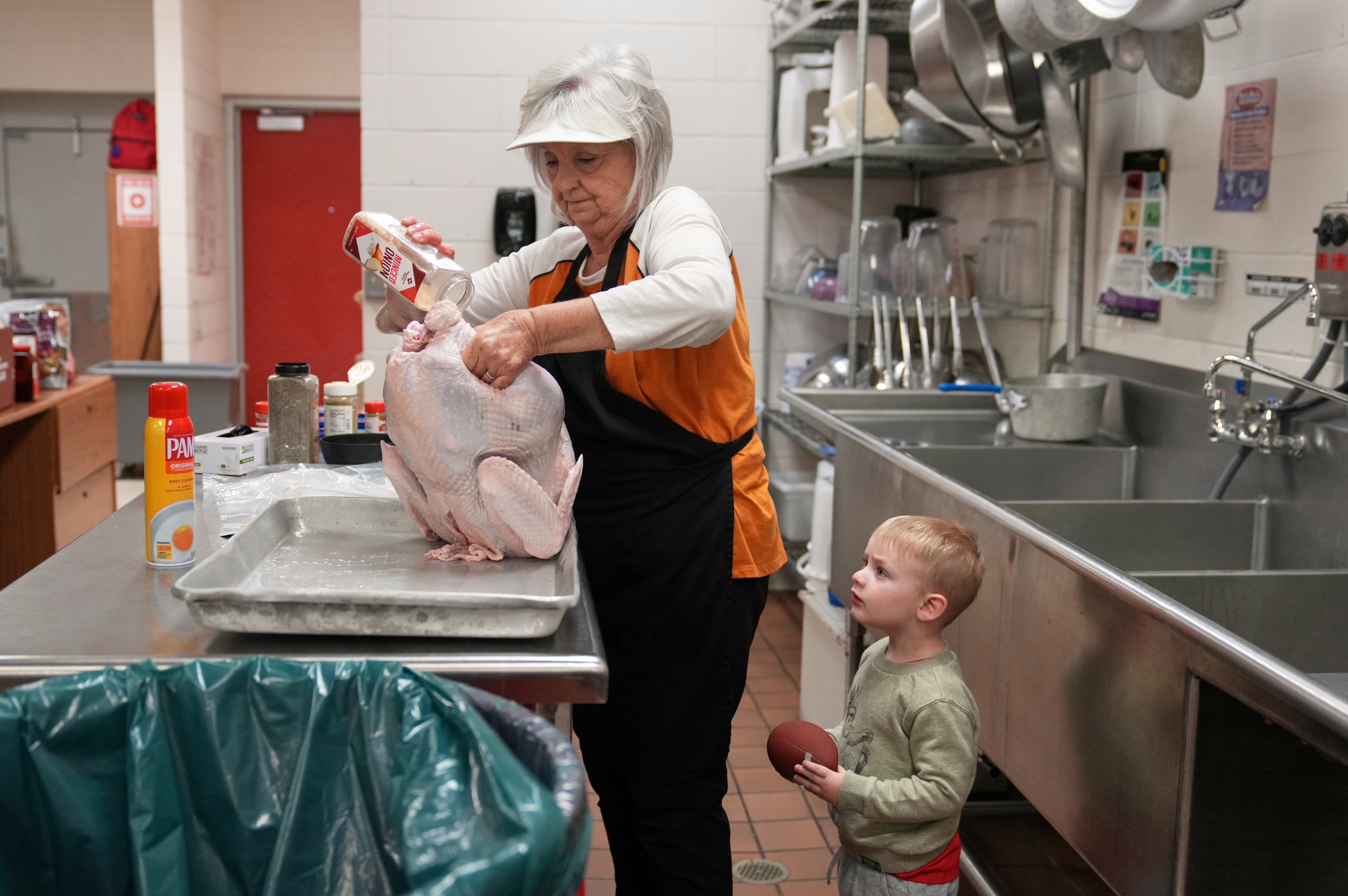Atlanta Community Food Bank faces federal cuts, increases in demand
Local food insecurity rates are on the rise, according to a new study from Feeding America, a nonprofit organization that acts as a nationwide network of more than 200 food banks that feed more than 46 million people through food pantries, soup kitchens, shelters and other community-based agencies.
Each year, the organization conducts research on regional access to food, eligibility for federal food assistance programs and the shortfall between people’s budgets and prices at the grocery store. This year’s Map the Meal Gap shows that 1 in 7 people and 1 in 5 children are facing hunger in the state of Georgia.
The Atlanta Community Food Bank, which facilitates food distribution to 29 counties in the metropolitan area, is one of many food banks left navigating unprecedented demand as food prices continue to rise.
The food bank is based in East Point, a 345,000-square-foot warehouse where food is delivered and picked up by partner agencies. The warehouse is also an operation center for employees and volunteers. In total, the building can support between 15 and 20 million pounds of food.
Kyle Waide, president and CEO of the food bank, said inflation and the loss of federal COVID-19 economic support are the driving forces behind increases in food insecurity.
“Stimulus funding helped provide additional support in the form of the enhanced child tax credit, enhanced unemployment benefits, enhanced SNAP benefits,” Waide said. “All of that gave people more resources. Those things got pulled away.
“They got discontinued at around the same time that inflation really started to take off, which was early 2022. From that point forward, we’ve just seen a steady increase in the number of food-insecure people and the number of people who are accessing our network for assistance.”
Three years ago, the food bank served less than 150,000 households per month, Waide said. Now, he said, that number has increased by 60%.
“We’re serving close to 250,000 households a month. That’s more than 700,000 people,” Waide said. “That’s sobering to think about.”
The report says nearly 9 of 10 high food insecurity counties are in the South, indicating regional disparities. Federal cuts at the U.S. Department of Agriculture have also contributed to uncertainty about the number of meals that food banks can provide to local populations.
“Food insecurity remains an urgent crisis in metro Atlanta and North Georgia,” said Sarah Fonder-Kristy, the food bank’s chief development officer. “Economic pressures and inflation continue to impact our neighbors, and as a result, more children, seniors and families are struggling to meet their basic food needs.”
Black Georgians and senior citizens are among those who have experienced the most significant changes in food insecurity rates, with 14% and 20% increases, respectively, according to Waide. The Commodity Supplemental Food Program, a federal nutrition program that aims to provide food to individuals over the age of 60, is one program at the food bank that could be impacted by federal budget proposals, Waide said.
“About 300 truckloads of food that we would have otherwise received have been canceled,” Waide said. “We have to somehow replace that in an environment where demand keeps growing.”
Editor’s note: This story has been updated to clarify that the food bank does not have in-house grocery pickup. It is a warehouse where partner agencies pick up food.
More Stories
Keep Reading



